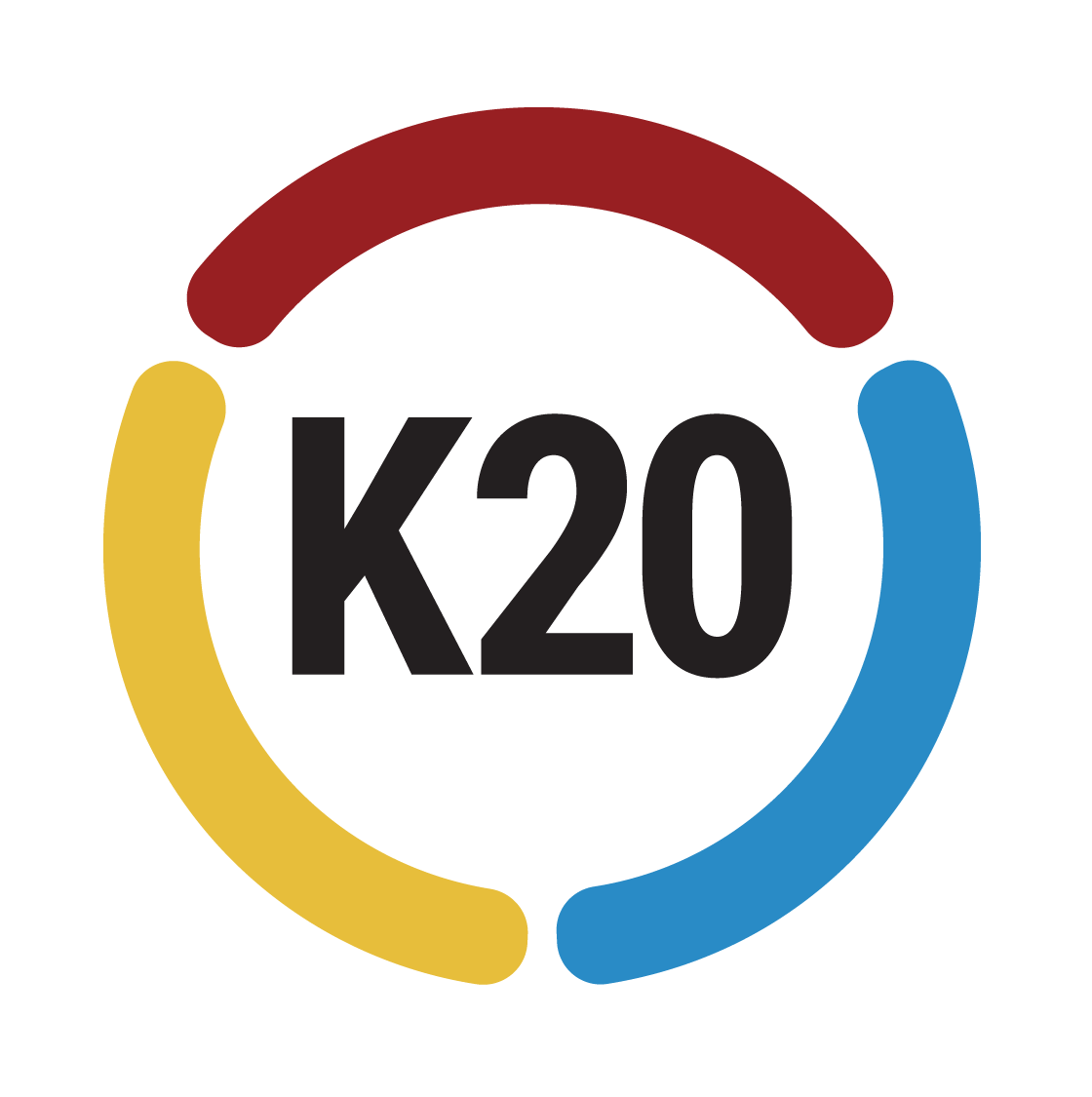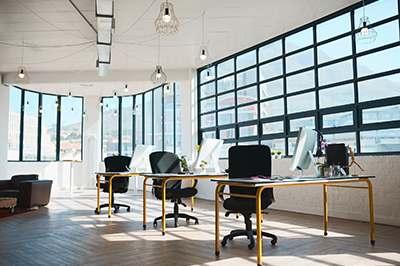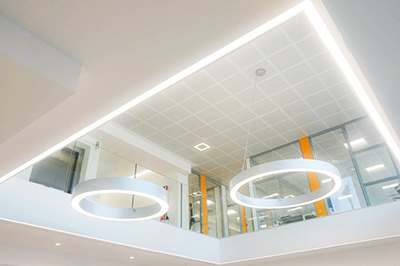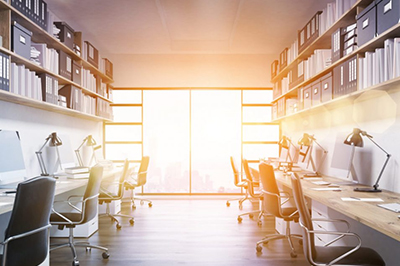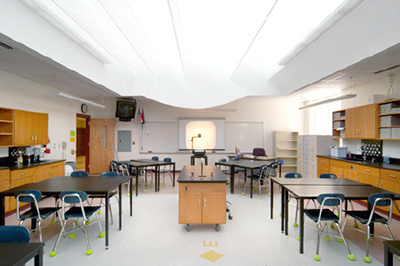Type and Source of Light
Type and Source of Light
Orientation of Windows (OW)
From the supporting literature (linked above), there is no consistency in the orientation of windows. However, the design of windows that maximize daylight was supported by many researchers. The quality of classroom is measured by its design features and or use features. The orientation of windows that maximize natural lighting reduces energy consumption. Blocking elements should be away from lighting source.
Recommendations
1. Maximize the use of natural lighting in the design, orientation, and selection of window system.
2. Avoid designing classrooms without windows.
3. The orientation of window should be away from all blocking elements.
4. Always use lighting fixtures to support daylight.
5. Select light fixtures whose wavelengths are equal or similar to sunshine.
6. Consider students behavior and outcomes as it relates to lighting, in the design of classrooms, school buildings, and window orientation.
7. Northern and southern classroom orientations improve energy saving in buildings.
Lighting Sources (LS)
From the supporting literature (linked above), lighting sources defined as daylight and lighting fixtures. It is important to complement daylight with lighting fixtures for improved health and performance of occupants. The choice and selection of lighting fixtures that supports natural light should be based on fitness and performance.
Recommendation
1. Select lighting source based on suitability for the task, building, neighborhood, energy efficiency, beauty, and lighting system performance.
Natural Light (NL)
From the supporting literature (linked above, daylight improves students behavior, achievement, and performance. Maximizing the use of natural light reduces heat gain, and increases savings by reducing energy demand, operation, and maintenance cost. Natural light guarantees improved health, productivity, safety, reduces stress and energy cost. Daylight also makes buildings sustainable and enhance their aesthetic view.
Recommendations
1. Promote the design of classrooms and buildings that maximize natural lighting.
2. The design of classrooms and choice of lighting system should be centered on the occupants, to reflect their psychological and physiological well-being.
3. Consider the age, height, and weight of students in determining the amount of light and color that is appropriate for them.
Lighting Fixtures (LF)
From the supporting literature (linked above), lighting fixtures involves all lighting sources other than daylight. Lighting fixtures complement natural light for optimal performance. Different lighting fixtures have impacts on students, and the choice of these fixtures are influenced by designers and architects rather than occupants and educators. In choosing any lighting fixture such as low-frequency ballast, high-frequency ballast, cool white fluorescent lamps, LED, full-spectrum fluorescent, full-spectrum fluorescent lamps with ultraviolet light supplements, high-pressure sodium vapor lamps and other lamps, it is important to address the concern of BUG, flicker and color temperature. For quality illumination, lighting fixtures should provide equal or similar to that of daylight.
Recommendations
1. Use the right amount and quality of lighting fixtures to complement natural light.
2. Select lighting fixtures based on task suitability, energy efficiency, and performance.
3. Select lighting fixtures with adjustable lighting control.
4. Use flicker-free automatic dimming luminaries.
5. Avoid using (artificial light) Light at Night (LAN).
Task Lighting (TL)
From the supporting literature (linked above), task lighting involves the measurement of light, light standards and availability. It identifies the combined amount of daylight and artificial light available for a given task. There was no consistency on lighting standard by researchers. However, it was observed that light level for classrooms should not be below 30 fc. The distribution of light in a classroom is important, as well as the level of illumination and color temperature. Low or very high levels impacts student reading. Artificial light settings also vary greatly in classrooms and should be controlled.Recommendations
1. The distribution of light in classrooms should not exceed a ratio of 8:1 of maximum foot-candles to minimum foot-candles.
2. Classrooms should be of moderate illumination, not low and not too bright (high).
3. Select an illumination level that fits classroom activity.
Glare (GL)
From the supporting literature (linked above), the existence of strong and uncontrolled light in classrooms impacts students health and performance. It also increases students stress level and makes them uncomfortable. Glare can either be directly from a light source (sunlight or artificial light) or from reflecting objects and can also be a combination of both. The effect of glare on students varies and could depend on factors such as age, weight, height, and academic achievement.
Recommendations
1. Avoid illuminating classrooms with inefficient lamps.
2. Ensure that lights are evenly distributed and controlled.
3. Use blinds and other shading devices to control glare.
4. Consider the orientation of windows in the design of classrooms.
5. Use a trackable digital blind system that maximizes the use of natural light, energy efficient, and also shows blinds’ position and rate of change.
6. Examine the impact of different types of lighting systems and sources on students.
7. Encourage the adoption of an integrated design approach. This ensures that the concern for glare is taken care of in the design.
8. Educate building occupants on the building design and control systems.
9. Create a system that encourages feedback from the occupants and incorporate their feedback into the design.
Quality of Lighting (QL)
From the supporting literature (linked above), the provision of quality lighting is key to students performance. The quality of light provided by lighting fixtures should be same or similar to that of daylight. An integrated approach to quality lighting will involve different professionals, sustainability issues, human factors, and any other factor that does not impact human health. Quality lighting refers to natural light and artificial light that meet certain standards and expectations.
Recommendations
1. Maximize the use of natural lighting.
2. Complement natural light with good lighting fixtures.
3. In addition to specific standards and expectations, select lighting fixtures that meet LEED standard.
References
1. Abdelatia, B., Marenne, C., & Semidor, C. (2010). Daylight Strategy for Sustainable Schools: Case Study of Prototype Classroom in Libya. Journal of Sustainable Development, 3(3), 60-67. doi:http://dx.doi.org/10.5539/jsd.v3n3p60
2. Allen, Edward, and Joseph lano. 2006. The Architect’s Studio Companion: Rules of Thumb for Preliminary Design. John Wiley & Sons.
3. Ariani, M. G., & Mirdad, F. (2015). The Effect of School Design on Student Performance. International Education Studies, 9(1), 175.
4. Ballina, M. (2016). “Illuminating education: composition and use of lighting in public k-12 classrooms.” Bachelor of Science, Massachuset Institute of Technology, Massachuset
5. Barret, P., Davies, F., Zhang, Y., and Barrett, L. (2015). “The Impact of Classroom Design on Pupils’ Learning: Final Results of a Holistic, Multi-level Analysis.” Building and Environment, 89, 118-133
6. Barrett, P., Zhang, Y., Moffat, J., Kobbacy, K. (2013). “A Holistic, Multi-level Analysis Identifying the Impact of Classroom Design on Pupils’ Learning”. Building and Environment, 59, 678-689
7. Bauer, S. E; Wagner, S. E; Burch, J; Bayakly, R; Vena, J. E (2013). “A case-referent study: light at night and breast cancer risk in Georgia”. Int J Health Geographics, 12,23
8. Becker, R., Goldberger, I., & Paciuk, M. (2007). Improving energy performance of school buildings while ensuring indoor air quality ventilation. Building and Environment, 42(9), 3261-3276.
9. Best Practices Manual. (2002). Collaborative for High Performance Schools, CA; Document: ED478351, published by ERIC (Education Resources Informa-tion Center), California Government, USA.
10. Blackmore, J; Bateman, D; Loughlin, J; O’Mara, J; Aranda, G; Centre for Re (2011). “Research into the Connection Between Built Learning Spaces and Student Outcomes: Literature Review”. Department of Education and Early Childhood Development, State of Victoria.
11. Boemi, S. N., Irulegi, O., & Santamouris, M. (2016). Energy Performance of Building. Switzerland: Springer.
12. Boray, P. F., Gifford, R., & Rosenblood, L. (1989). Effects of warm white cool white and full-spectrum fluorescent lighting on simple cognitive performance, mood, and ratings of others. Journal of Environmental Psychology, 9(4), 297-307
13. Brown, Z.B (2009). “Occupant Comfort and Engagement in Green Buildings: Examining the Effects of Knowledge, Feedback and Workplace Culture”. The University of British Columbia, Vancouver, BC.
14. Bourgeois, D; Reinhart, C; Macdonald, I. (2006) “Adding Advanced behavioral models in whole building energy Simulation. A Study on the total energy impact of manual and automated lighting control”. ELSEVIER, 38(7), 814-823.
15. Butin, D. (2000). “Classroom.” National Clearinghouse for Educational Facilities, Washington, DC., Washington, DC., 1-5
16. DiLaura, D; Houser, K; Mistrick, R; Steffy, G. (2011). “The Lighting Handbook.” Illumination Engineering Society of North America, New York, NY, 328.
17. Dunn, R., Krimsky, J., S., Murray, J., B., and Quinn, P., J. (1985). “Light up their lives: A review of research on the effects of lighting on children’s achievement and behavior.” The Reading Teacher, 38(9), 863-869.
18. Earthman, G. I. (2004). “Prioritization of 31 Criteria for School Building Adequacy.” American Civil Liberties Union Foundation of Maryland. Retrieved in 2016 from http://www.schoolfunding.info/policy/facilities/ACLUfacilities_report1-04.pdf, Baltimore, MD.
19. Edwards, L., Torcellini, P. (2002). “A Literature Review of the Effects of Day Light on Building Occupants”. National Renewable Energy Laboratory, Colorado NREL/TP-550-30769
20. Exchange, H. P. S., & Partnerships, N. E. E. (2005). NE-CHPS New Construction Major Renovation. Retrieved from Northeast Collaborative for High Performance School Protocol
21. Fisher, Kenn (2001) “Building Better Outcomes: The Impact of School Infrastructure on Student Outcomes and Behaviour. Schooling Issues Digest” Department of Education, Training and Youth Affairs, Australia.
22. Ford, A. (2007). Designing the sustainable school, images publishing group pty ltd, Australia.
23. Grangaard, E.M (1995). “Color and Light Effects on Learning”. Association for Childhood Education International Study Conference and Exhibition, Washington, DC
24. Hathaway, W., E. (1995). “Effects of School Lighting on Physical Development and School Performance.” The Journal of Educational Research, 88(4), 228-242., 228-242., 228-242., 228-242.
25. Heschong L. (1999). “Daylighting in Schools: An Investigation into the Relationship Between Daylighting and Human Performance (HMG Project #9803)”. Heschong Mahone Group to Pacific Gas and Electric Company on behalf of the California Board for Energy Efficiency Third Party Program. http://files.eric.ed.gov/fulltext/ED444337.pdf (May 16, 2016)
26. Huang, R. H., Lee, L., Chiu, Y. A., & Sun, Y. (2014). Effects of correlated color temperature on focused and sustained attention under white LED desk lighting. Color Research & Application, 0, 1-6
27. Hygge, S., and Knez, I. (2001). “Effects of Noise, Heat and Indoor Lighting on Cognitive Performance and Self-reported Effect.” ELSEVIER, 21(3), 291-299.
28. Ileana, I., Risteiu, M., Marc, G., and Sofalca, I. (2015). “Analysis and simulation of an automated LED lighting system for pedestrian crosswalk “SPIE. Digital Library,1-6.
29. Josijevic, M. M., Gordic, D. R., Milovanovic, D. M., Jurisevic, N. M., & Rakic, N. Z. (2017). A Method to Estimate Savings of LED Lighting Installation in Public Buildings: The Case Study of Secondary Schools in Serbia. Thermal Science: International Scientific Journal, 2(21). doi:http://thermalscience.vinca.rs/pdfs/papers-2017/TSCI161209118J.pdf
30. Knirk, F. G. (1970). Acoustical and visual environments affect learning. audiovisual instruction, 15, 34-35
31. Kuger, E. L., & Zannin, P. H. T. (2002). Acoustic, thermal; and luminous comfort in classroom. ELSEVIER, 39(9), 1055-1063.
32. Lighting Design Lab, and Oregon, E. T. o. (2013). “FootCandle Light Guide.” Retrieved from https://www.lightingdesignlab.com/sites/default/files/pdf/Footcandle_Lighting%20Guide_Rev.072013.pdf
33. Mayron, L., W.,, Ott, J., Nations, R., and Mayron, E., L. (1974). “Light, Radiation, and Academic Behavior.” Academic Therapy, X, No. 1, 33-47.
34. Mott, M.S; Robinson, D.H; Walden, A; Burnette, J; Rutherford, A.S (2012). “Illuminating the Effects of Dynamic Lighting on Student Learning” Sage Open. 1-9
35. Nicklas, M. H; Bailey, G. B. (1996). “Student performance in daylit schools.” Innovative Design. Raleigh, North Carolina.
36. Oetinger, J. W. (2010). Green Schools: Constructing and Renovating School Facilities with the Concept of Sustainability. (Doctoral), Lindenwood University, Lindenwood, Missouri. Retrieved from file:///C:/Users/sala9243/Downloads/out.pdf (34330099)
37. Pereira, L. D., Raimondo, D., Corgnati, S. P., & da Silva, M. G. (2014). Assessment of indoor air quality and thermal comfort in Portuguese secondary classrooms: methodology and results. Building and environment, 81, 69-80.
38.Perez, Y.V; Capeluto, I.G. (2009). Climatic considerations in school building design in the hot-humid climate for reducing energy consumption. ELSEVIER, 86(3), 340-348.
39. Plympton P., Conway S. Epstein K. (2000b). “Day lightening in schools: improving student performance and health at a price school can afford”, NREL/CP-550-28049, National Renewable Energy Laboratory, USA
40. Pulay, A., Read, M., Tural, E., and Lee, S. (2016). “Examining Student behavior under two Correlated color temperature levels of lighting in an Elementary school classroom.” Educational Planning, 23(3), 56-65.
41. Rautkyla, E., Puolajja, M., Tetri, E., & Halonen, L. (2010). Effects of correlated color temperature and timing of light exposure on daytime alertness in lecture environments. Light & Visual Environment, 38(2), 59- 68
42. Salary, S., Holliday, L., Keesee, M., and Wachter, H. P. (2017). “Building Features in Schools that Influence Academic Performance.” ASCE (American Society of Civil Engineers). submitted for publication.
43. Schneider, M. (2002). Do School Facilities Affect Academic Outcomes? (ERIC Number: ED470979). http://www.edfacilities.org/pubs/ (Sept. 12 2016): U.S. Department of Education.
44. Sleegers, PJC; Moolenaar, M.N; Galetzka, M; Pruyn, A; Sarroukh, B.E; van der Zande, B (2013). “Lighting affects students’concentration positively: Findings from three Dutch studies”.Lighting Research & Technology, 45, 159–175
45. Takaoka, M; Norbäck, D (2011). “The Influence of School Environment on the SBS Symptoms and the Development of Asthma and Allergy”. Sick Building Syndrome in Public Buildings and Workplaces, Springer-Verlag, Berlin Heidelberg
46. Tanner, K. Jago, E. (1999), Influence of the School Facility on Student Achievement. April 2009 http://www.coe.uga.edu/sdpl/researchabstracts/visual.html
47. Tanner, C. K. (2000). “The influence of school architecture on academic achievement.” Journal of Educational Administration, 38(4), 309-330
48. Tanner, C. Kenneth (2009) “Effects of School Design on Student Outcomes”. Journal of Education Administration, 47(3), 381-399.
49. Vahl, F. P., Campos, L. M. S., & Filho, N. C. (2013). Sustainability constraints in techno-economic analysis of general lighting retrofit. ELSEVIER, 67, 500-507.
50. Veitch, J.A; McColl, S.L (2001) “A Critical examination of perceptual and cognitive effects attributed to full-spectrum fluorescent lighting” Ergonomics, 44(3), 255-279
51. Virginia Department of Educaiton (2013). “Guidelines for School Facilities in Virginia’s Public School”. http://www.doe.virginia.gov/support/facility_construction/school_construction/regs_guidelines/guidelines.pdf
52. Vrabel, P. L., Bernecker, C. A., & Mistrick, R. G. (1998). Visual performance and visual clarity under electric light sources: Part II—visual clarity. Journal of the Illuminating Engineering Society, 27(1), 29-41
53. Winchip, S. M. (2017). Fundamentals of Lighting. New York, Fairchild Books.
54. Winterbottom, M; Wilkins, A. (2009). “Lighting and discomfort in classroom” Journal of Environmental Psychology, 29(1), 63-75.
55. Wu, W., & Ng, E. (2003). A review of the development of daylighting in schools. Lighting Res. Technol, 35(2), 111-125. doi:10.1191/1477153503li072oa
56. Wymelenberg, K., V., D (2012). “Patterns of occupant interaction with window blinds: A literature review”. ELSEVIER, 51, 165-176.
